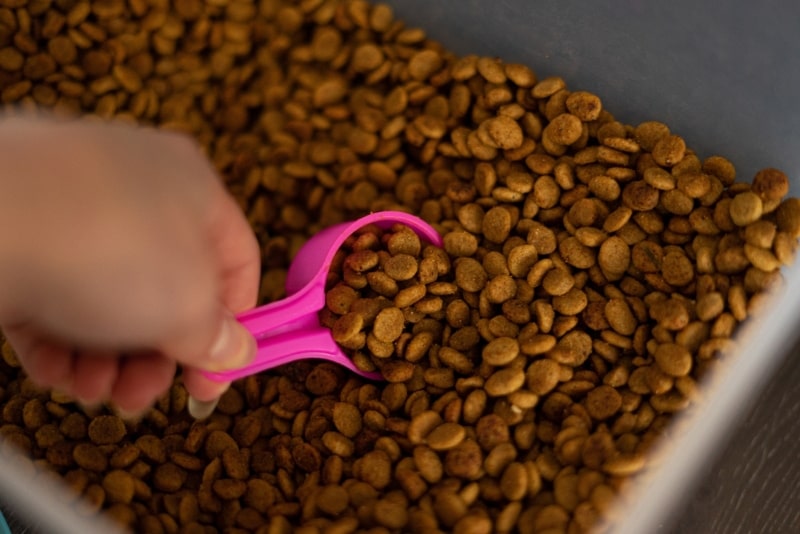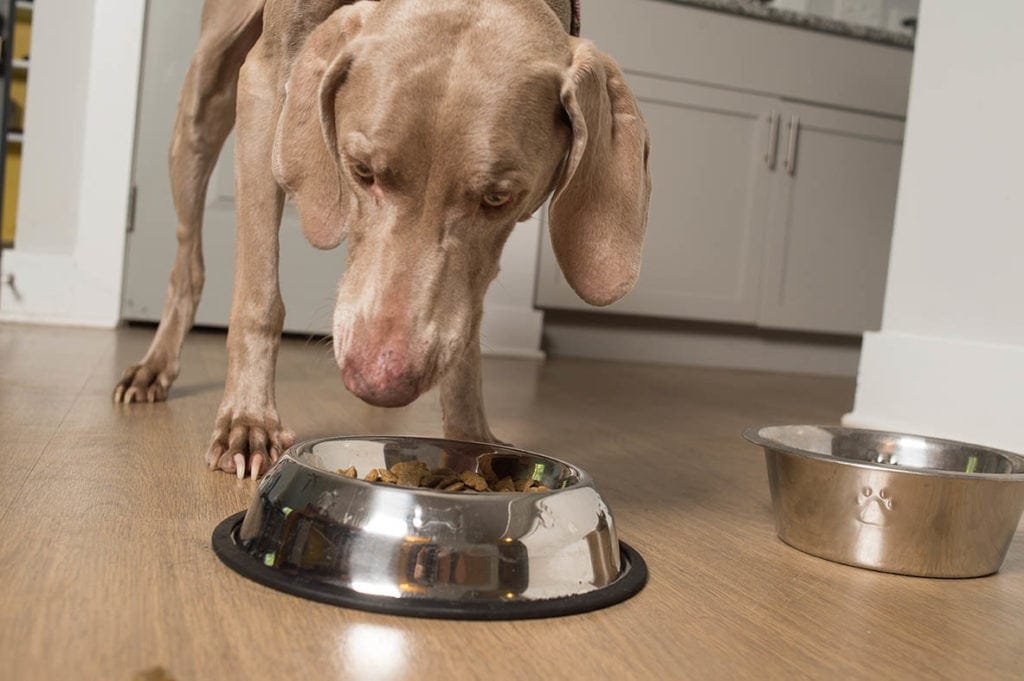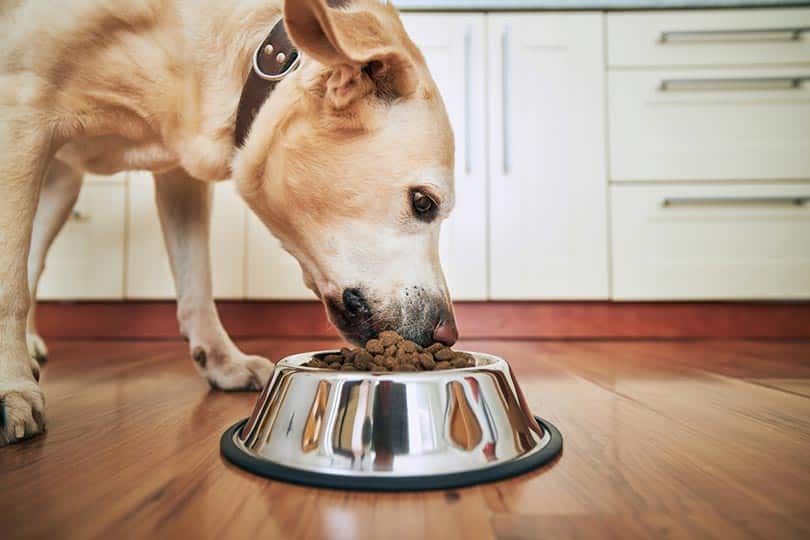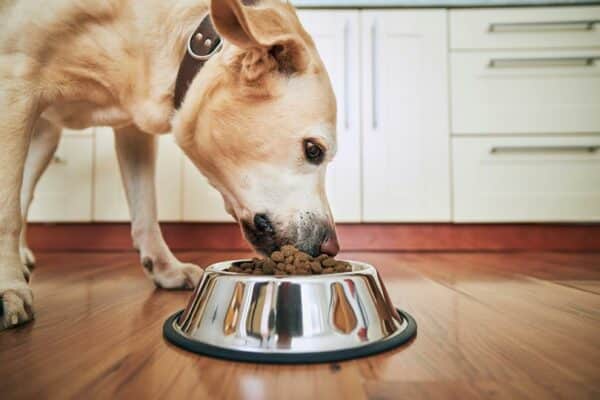The American Diabetes Association has designated November American Diabetes Month. One in every 400 dogs has this disorder, which prevents the body from regulating its blood sugar (glucose) levels. According to Blue Pearl Veterinary, signs and symptoms of diabetes include: Increase in water consumption, increase in urination, increase in appetite, weight loss, and, if the animal has had diabetes for some time, cataracts.
“If you notice any of these symptoms, we highly recommend seeing your family veterinarian as soon as possible,” says Neil Shaw, Blue Pearl’s chief medical officer. Meanwhile, if your dog is young, healthy, and not exhibiting any of the symptoms Dr. Shaw cites, you can make sure you never get the diabetes diagnosis with some simple nutritional guidelines.
Here are six simple steps we can all take to prevent diabetes in dogs.
1. Feed a diabetes-preventive diet with a low-glycemic index
That means a grain-free formula, specifically one that does not contain rice, a very high-glycemic grain. Eating high-glycemic index food, humans and dogs alike feel hungry again shortly after eating, which makes us want to eat more than we should.
Over time, high glucose levels and excessive insulin secretion impair the pancreas’ ability to secrete insulin — and that’s diabetes. But when we eat low-glycemic food and snacks, we experience lower but more sustained increases in blood sugar after eating, which puts less strain on the pancreas. Feeling less full, Spot won’t be hungry shortly after a meal, and he’ll have higher endurance, improved blood cholesterol levels, and a reduced risk of cardiovascular and gallbladder disease.
2. Measure your mutt’s meal portions, and don’t leave food out for Spot to graze
As dogs help themselves to more than their healthy portion, they gain excess weight, grow fat, and become vulnerable to diabetes.
Let’s say the dog doesn’t do the necessary exercise to burn off those extra calories, they will (surprise!) become obese — and obesity puts a huge strain on the body, overtaxing the heart and gallbladder, and putting the dog at high risk for diabetes.

White bread, crackers, and cereal (and their sugary cousins: cake, cookies, and doughnuts) should be totally off the table — don’t even give these high-glycemic items as an occasional snack. Why? They cause blood sugar levels to spike quickly, and rapid increases in blood sugar send signals to the pancreas to increase insulin secretion, which leads to a sharp dip in blood sugar (aka a blood-sugar low, or hypoglycemia, the dreaded “sugar crash”).
Give celery or carrot sticks as a treat instead.
4. Never feed a dog corn or anything that contains corn (or corn syrup)
This sweet, starchy ingredient — sadly, a staple of many dog-food brands — is something to avoid entirely if you want to protect your dog from diabetes.
Be careful with millet and sweet potatoes, too, which have both become popular pet-food ingredients. Although they are easily digested and excellent for dogs with GI issues, they’re high-glycemic index.

5. Feed more of the good stuff
The low-glycemic index ingredients you want your dog eating are protein (i.e., meat or fish), healthy fat, and oil (see below), plus nonstarchy, low-carbohydrate vegetables such as broccoli, cauliflower, kale, asparagus, and celery.
Happily, more and more companies, such as Red Moon Pet Food, are making it easy to feed dogs a grain-free, low-glycemic index diet, to promote healthy weight management and help overweight dogs shed unwanted pounds.
6. Sprinkle a loving spoonful of cinnamon on your dog’s food
Studies show that just half a teaspoon of this delightfully fragrant spice each day helps to regulate blood sugar, boosting the body’s ability to use insulin to improve blood glucose levels. Add to that a loving spoonful of coconut oil; like cinnamon, it helps prevent diabetes by improving metabolic function and regulating and balancing insulin. Plus, both taste great, so Spot won’t complain!
Do you have a dog with diabetes? How are you managing it? Please share your tips in the comments!
Featured Image Credit: Jaromir Chalabala, Shutterstock
Contents
- 1. Feed a diabetes-preventive diet with a low-glycemic index
- 2. Measure your mutt’s meal portions, and don’t leave food out for Spot to graze
- 3. Resist the urge to share bagels with Spot on Sunday morning
- 4. Never feed a dog corn or anything that contains corn (or corn syrup)
- 5. Feed more of the good stuff
- 6. Sprinkle a loving spoonful of cinnamon on your dog’s food










